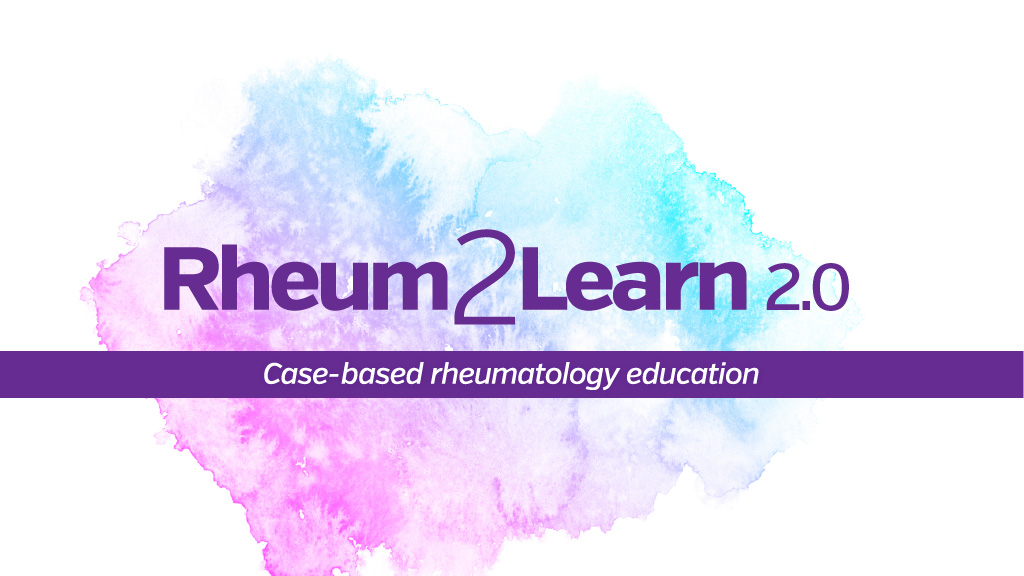
Rheum2Learn 2.0: Musculoskeletal Disorders
Activity Information
Rheum2Learn 2.0 is case-based fundamental clinical rheumatology education for residents. Each interactive activity includes three patient cases that focus on the care and assessment of individuals with rheumatologic diseases.
In this activity, explore diverse patient presentations with widespread or regional musculoskeletal pain. Participants will learn to differentiate clinical patterns and approaches to diagnosis and treatment for conditions such as polymyalgia rheumatica (PMR), fibromyalgia, and joint hypermobility syndromes.
This activity is part of a series. See the other
activities in the series below.
- Rheum2Learn 2.0: Crystalline Arthritis
- Rheum2Learn 2.0: Infectious Arthritis
- Rheum2Learn 2.0: Inflammatory Myopathies
- Rheum2Learn 2.0: Musculoskeletal Examination
- Rheum2Learn 2.0: Osteoporosis
- Rheum2Learn 2.0: Osteoarthritis
- Rheum2Learn 2.0: Pediatric Rheumatology
- Rheum2Learn 2.0: Rheumatic Manifestations of Systemic Disease
- Rheum2Learn 2.0: Rheumatoid Arthritis
- Rheum2Learn 2.0: Sjögren’s Disease
- Rheum2Learn 2.0: Spondyloarthritis
- Rheum2Learn 2.0: Systemic Lupus Erythematosus
- Rheum2Learn 2.0: Systemic Sclerosis
- Rheum2Learn 2.0: Systemic Vasculitis
Registration is complimentary.
Target Audience
Residents in training who may provide care for patients with rheumatic diagnoses in primary care, inpatient, critical care, and other clinical contexts.
The activity may also be of interest to medical students, fellows in training, advanced practice providers, practicing physicians, and other health care professionals who seek to strengthen their clinical knowledge of rheumatic diseases.
Learning Objectives
Upon completion of this activity, participants should be able to:
- Compare and contrast polymyalgia rheumatica (PMR) from other causes of musculoskeletal pain
- Recognize how PMR presents and understand risk for GCA with PMR
- Demonstrate how to taper prednisone in treating PMR
- Identify a patient with joint hypermobility using the hypermobility questionnaire and Beighton score
- Distinguish between hypermobility spectrum disorder (HSD) and hypermobile Ehlers-Danlos syndrome (hEDS)
- Determine need for referrals in patients with suspected hEDS
- Describe the key clinical manifestations of fibromyalgia
- Outline mimickers of fibromyalgia and ways to distinguish them from fibromyalgia
- Discuss non-pharmacologic and pharmacologic treatments for fibromyalgia
CE & MOC Information
This activity is not eligible for CME/MOC.
Acknowledgement of Commercial Support
No commercial support was provided for this activity.
Educational Activity Policies
See ACR educational activity policies, including the online enduring activity refund policy.